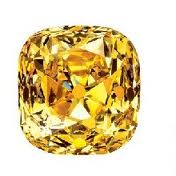 Whose Diamond?
Whose Diamond?
A high-end jewelry store is robbed in a spectacular well-publicized heist. Now, almost five years later, one of the stolen diamonds turns up. The store and the pawnbroker are locked in a lawsuit over which of them owns it.
Isn’t someone being left out?
In 2007, two well-dressed men arrived at Graff Diamonds Ltd. in a chauffeured Bentley Continental Flying Spur. Once inside the London store, they chatted with staff, then pulled out silver handguns. They left with more than $20 million in jewelry.
None of the gems surfaced for several years. Then in January 2012, the Gemological Institute of America (GIA) in New York City recognized a yellow diamond submitted for appraisal as part of the loot taken from Graff. GIA had originally certified the 16.64 carat diamond stolen from Graff, and they now saw the same diamond recut as a 16.28 carat stone.
The diamond had been submitted to GIA by a Hong Kong pawnbroker, Yau On Co. Graff immediately sued the pawn shop for return of the gem, also asking for costs of the law suit and attorneys’ fees.
The pawnbroker argued that he did not know the diamond was stolen, that he had received full source documentation when he bought the stone, and that it was said to have come from a wealthy person in mainland China. He refused to allow GIA to return the diamond to Graff.
As of this writing, GIA is holding the gem, pending resolution of the dispute by the New York State Supreme Court in Manhattan.
Insurer, hello?
Nowhere in news reports of this case is the insurer mentioned. Surely Graff, a luxury jewelry store with several locations and an international reputation, would be covered by theft insurance. Presumably a claim was made and has been settled.
As insurers know, once a claim is paid, the insured is “made whole.” The lost goods, if they should subsequently turn up, are the property of the insurance company.
As part of claims procedures, insurers should notify major gem labs of stolen gems, with specific descriptive details from the gem certificates. They should also file the necessary ownership documents in the appropriate jurisdiction. If any of the stones turn up, the insurer would be on record as the owner.
For higher-value gems these steps are well worth the effort. It’s likely such gems will be submitted for certification in the future and the labs could check for stolen goods that have been reported. Even with more ordinary gems, if the details of the lost gems are listed with authorities, it’s more likely there will be recoveries.
If gems are recovered, and returned to the insurer, the insurer may agree to sell them back to the insured for the amount paid out in settling the claim. Considering the current market, this outcome would still be a win for Graff, as the price of colored diamonds has gone up considerably since the theft in 2007.
The Graff case is one little instance in the worldwide trade in illegal gems. This diamond traveled at least from London to Hong Kong to New York, and probably other places in between. There are all sorts of merchants willing to trade in stolen gems, willing to not look too deeply into their provenance. There are places to have the gems recut, “labs” that will issue bogus certificates, go-betweens who will “represent the owner.”
What about the pawnbroker who “didn’t know” the diamond was stolen? Did he think he was getting an extraordinary diamond from a naïve seller? Did he suspect it was stolen? Is he the legal owner because he has a bill of sale?
We await news of how this lawsuit is resolved.
FOR AGENTS & UNDERWRITERS
Hong Kong, where the stolen gem turned up, is considered a travelers’ paradise for bargains of all kinds. A tourist might get a “really good deal” there. For all high-priced jewelry purchased during travel, be sure to get a certificate from a reliable lab, such as GIA, AGS or GCAL.
To verify authenticity of a certificate, follow the appropriate link. You will need the report number and the carat weight of the stone.
GIA Report Check
AGS Report Verification
GCAL Certificate Search
For jewelry purchased at pawn shops, flea markets, or other unorthodox venues, be sure to get an appraisal from a trained gemologist (GG, FGA, or equivalent) who has addition training in insurance appraisals. One course offering such additional training is the Certified Insurance Appraiser™ (CIA) course of the Jewelry Insurance Appraisal Institute, Oakland, CA.
FOR ADJUSTERS
Make it a part of your claim procedures to establish your ownership of lost or stolen gems after the settlement. Contact the major labs with gem details, including dimensions, clarity, color, caratage and cut.
Not only very expensive stones, but even relatively ordinary ones, of a carat or more with reasonable color and clarity (and a value of say $10,000), should be reported. This makes recovery more likely.
GIA, AGS and GCAL are the most reliable labs for diamond reports. To verify authenticity of a certificate, follow the appropriate link. You will need the report number and the carat weight of the stone.
GIA Report Check
AGS Report Verification
GCAL Certificate Search
©2000-2025, JCRS Inland Marine Solutions, Inc. All Rights Reserved. www.jcrs.com

